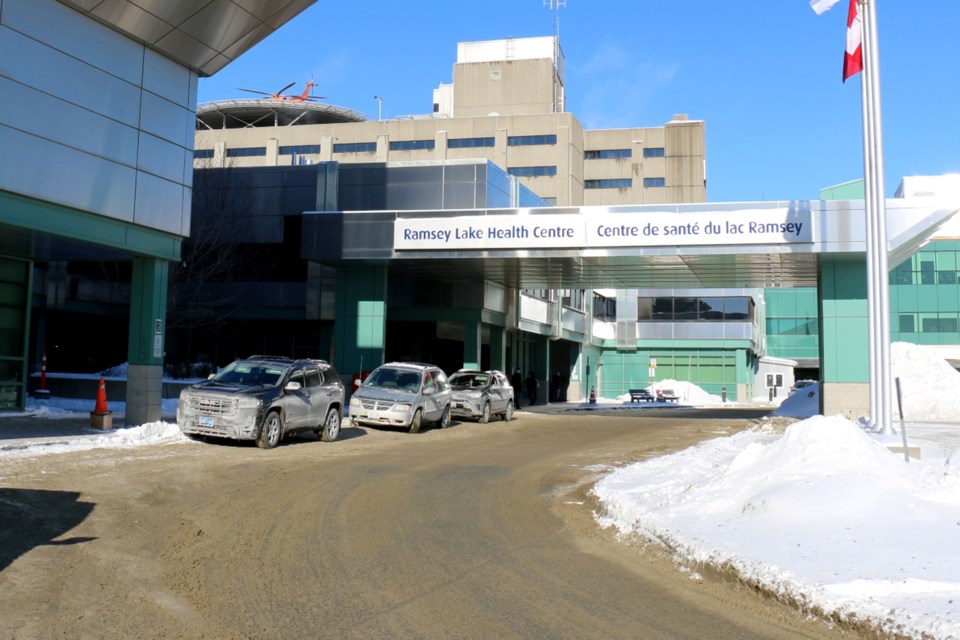Ontario's acting auditor general Nick Stavropoulos presented a value-for-money spending audit to the Ontario government this week and confirmed what Northerners have been hearing for many months — Northern Ontario health clinics and hospitals are stretched to the limits in terms of being able to provide timely emergency room care and that there is a serious shortage of doctors and nurses.
"While the sickest patients are able to access and receive emergency department care on a timely basis, more needs to be done to address the risks associated with long wait times and increasing patient length of stay," said the report.
A key item addressed in the report was frequent use of Locums (traveling temporary doctors) called on to fill in, especially at smaller hospitals in Northern Ontario.
"We found that a primary reason for their increased use of the Locum Program has been higher rates of local physicians retiring or leaving the community in the last couple of years. That has forced hospitals to rely on the Locum Program to fill longer-term physician vacancies even
though the program was intended to be used as a temporary measure," said the report.
The report further stated that hospitals requested more than 96.000 hours of support from the Locum Program, but the program was only able to cover 60,000 hours.
"Ontario Health informed us that due to an overall shortage of emergency department physicians, the Locum Program prioritizes hospitals with the most urgent needs, and considers requests from hospitals in Northern communities before those in the south," said the report.
The report also touched on the specialties that locum physicians provided in the North.
The specialties requiring the greatest number of locum days in Northern Ontario were internal psychiatry, general surgery, internal medicine, and anaesthesia,” said the report.
“Four large Northern cities—Sault Ste. Marie, Sudbury, Thunder Bay and Timmins—received about two-thirds of specialist locum coverage days.”
The report included a breakdown of the time lag from when a patient reported in at the emergency room to the time when that patient was actually seen by a physician.
The chart showed the best time being recorded by the South Grey Bruce Health Centre (Durham) at 0.6 hours (36 minutes), to the worst time reported by Windsor Regional Hospital (Metropolitan campus) at 4.1 hours. Sudbury's Health Science North (Ramsey Lake Health Centre) was at the halfway point with 2.1 hours. North Bay's hospital was at 2.8 hours, Sault was 2.6 hours and Timmins was 1.2 hours.
Agency Nurses
The hiring of agency nurses to offset the shortage of nursing staff was also discussed at length in the Auditor's report. Agency nurses are fully qualified Registered Nurses employed by contract nursing companies that hire out their nurses at higher-than-normal hourly rates to hospitals and long-term care homes.
The concern has been expressed many times in the past year by groups such as the Registered Nurses Association of Ontario and by Nickel Belt MPP France Gélinas, who is the NDP official opposition health critic.
Stavropoulos said the auditing of Northern Ontario hospitals in 2023 found a significant use of agency nurses extending beyond those needed in emergency rooms.
"For example, that audit found that of the 34 Northern Ontario hospitals that responded to a questionnaire, 30 of them used agency nurses in 2022/23 at a cost of more than $73 million. Furthermore, that audit found that agencies charged hospitals as much as $160 an hour for a
registered nurse," said his report.
It went on to say that agency nursing costs may continue to rise. The report said the higher pay and flexible hours had resulted in some nurses leaving their hospital jobs to take advantage of the better pay and working conditions, which has only forced hospitals to rely on agency nurses even more.
One of the reasons for longer ER wait times, said the report, is that far too many non-urgent cases were going to the ER. The report mentioned such things as an earache, a sore throat and mild muscle pain as examples of non-emergency situations.
"Lower-acuity patients, specifically less urgent or non-urgent cases, accounted for approximately 23 per cent (or 1.29 million) of all emergency department visits in 2022/23. Some of these patients, such as those experiencing a sore throat or cold, did not require emergency care but chose to visit the emergency department because it was the only immediate option available or they had no primary care provider," said the report.
The report also called for more consistent use of medical directives, which would help reduce the time patients need to spend in the emergency room.
Medical directives are orders that ER doctors have written to speed up the process so that nurses and other clinicians can take action, such as ordering blood tests or X-rays, before the physician sees the patient.
The report said there are significant variants in medical directives at different hospitals and there is no province-wide system for applying them, but it would help to use directives more often.
The auditors report on Northern health concluded there should be a formal strategy for health care in this region.
"Our audit concluded that the Ministry of Health and Ontario Health have processes in place to oversee that the delivery of hospital services in Northern Ontario is timely, consistent and meets patient needs, but they can work on improving their effectiveness, said the report.
"In particular, Ontario lacks a dedicated health-care strategy for the north region; a dedicated strategy could go a long way to better meet the unique health-care needs of Northern Ontario residents. As well, patients in Northern Ontario are more likely to experience longer waits to access the hospital care they need than patients from other parts of Ontario."
Len Gillis covers health care and mining for Sudbury.com.
